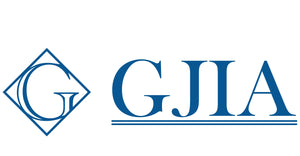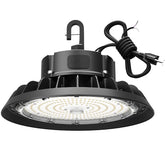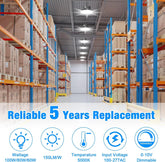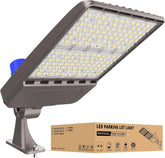Buy LED Lights to Save Energy
Enhanced Content with Strategic Additions:
Imagine opening your monthly utility bill for your commercial building and seeing a number that makes you pause. For many business owners, lighting accounts for 18-40% of total energy costs – a silent budget drain hidden in plain sight. What if you could slash these expenses while making a measurable environmental impact? Upgrading to commercial LED lighting systems offers more than just energy efficiency; it’s a triple-win solution that reduces operational costs, future-proofs your facility against rising energy rates, and aligns with ESG commitments. This isn’t just about keeping up with trends – it’s about redefining operational excellence in an era where sustainability directly impacts market competitiveness and stakeholder value.

Why Smart Businesses Are Making the LED Switch Now
-
Regulatory Foresight
The U.S. is accelerating clean energy mandates, with states like California implementing Title 24 requirements that make LED retrofits mandatory for commercial renovations. Federal tax incentives through the Inflation Reduction Act now offer 30-50% cost deductions for energy-efficient upgrades. Proactive adoption positions your business to capitalize on these incentives rather than scrambling to meet deadlines. -
Financial Engineering Through Energy Savings
While traditional bulbs might cost $2-$5 each versus $10-$20 for LEDs, the true economics tell a different story:
- 72% lower energy consumption than incandescent (U.S. DOE)
- 50,000-100,000 hour lifespan vs. 1,000-2,000 hours for halogens
-
3.5-year average ROI with maintenance savings included
Forward-thinking CFOs treat LED transitions as capital optimization strategies rather than simple cost centers.
-
Operational Resilience
Modern commercial LED systems integrate with IoT platforms, enabling:
- Real-time energy monitoring through cloud dashboards
- Automated dimming via occupancy sensors
- Predictive maintenance alerts
This transforms lighting from a static utility into a smart building management tool.
5-Step Framework for Maximum LED ROI
-
Conduct a Lighting Energy Audit
Use tools like EPA’s Portfolio Manager to benchmark against similar properties. Identify “energy vampires” – areas with 24/7 operation or outdated high-intensity discharge (HID) fixtures. -
Match Lighting to Operational DNA
- Retail: 97 CRI LEDs for true color rendering in apparel stores
- Warehouses: 130+ lumen/watt high bays with motion-triggered zones
- Healthcare: Tunable white LEDs aligning with circadian rhythms
-
Future-Proof with Adaptive Design
Specify fixtures supporting:
- PoE (Power over Ethernet) capabilities
- DALI-2 dimming protocols
- Dark Sky-compliant outdoor lighting
-
Leverage Utility Partnerships
Many providers like PG&E and ConEd offer $0.25-$1.00 per kWh incentives through prescriptive rebate programs. Some even provide free LED retrofits through energy-as-a-service models. -
Validate with Third-Party Certification
Prioritize DLC Premium-listed products ensuring:
- ≥120 lm/W efficacy
- <10% light depreciation at 50,000 hours
- IP65 rating for harsh environments
Case Studies: The Proof in Performance
-
National Retail Chain
After replacing 12,000 metal halide fixtures with connected LEDs across 35 stores:
- 68% energy reduction ($290k annual savings)
- 23% sales lift in properly lit display areas
- LEED Gold certification achieved
-
Midwest Manufacturing Plant
Implemented IoT-enabled LED high bays with task-specific lighting:
- 52% productivity gain in assembly areas
- $18k/year saved through predictive maintenance
- Qualified for $147k state green manufacturing grant
-
NYC Office Tower
Retrofitted 1980s fluorescent system with human-centric LEDs:
- 44% lower tenant turnover
- WELL Building Silver certification
- 7.3% rent premium for daylit spaces
Implementation Masterclass
-
Phased Transition Strategy
Prioritize:
- Parking garages (fastest ROI)
- High-traffic corridors
- Specialty areas (kitchens, labs)
-
Financing Innovation
Explore:
- ESPC models where savings fund payments
- Green bonds for large portfolios
- C-PACE financing with property tax repayment
-
Performance Contracting
Demand vendor guarantees:
- Minimum kWh reduction thresholds
- Lux level maintenance commitments
- 10-year performance warranties
The ESG Imperative
Commercial LED adoption directly impacts:
- CDP Climate Change Reports: Document Scope 2 emission reductions
- GRESB Scores: Improve energy efficiency metrics by 18-35%
- Employee Value Proposition: 61% of workers prioritize employers with sustainability commitments (McKinsey 2023)
By transforming lighting infrastructure, businesses don’t just change bulbs – they illuminate a path to market leadership in the low-carbon economy. The question isn’t whether to upgrade, but how strategically you’ll leverage LED technology to drive operational, financial, and reputational advantage.
Translated Version for U.S. Market:
Commercial LED Lighting: The Strategic Upgrade Redefining American Business Efficiency
Picture opening your commercial building’s monthly energy bill and confronting a figure that gives you pause. For countless businesses, lighting silently consumes 18-40% of total energy costs – an often-overlooked budget drain. What if you could dramatically reduce these expenses while making a tangible environmental impact? Transitioning to commercial LED lighting systems delivers a triple advantage: slashing operational costs, future-proofing against rising energy rates, and demonstrating ESG leadership. This isn’t merely following trends – it’s a strategic reinvention of operational excellence in an era where sustainability drives market competitiveness and stakeholder value.
Why Progressive Businesses Are Embracing LED Technology
-
Regulatory Preparedness
With states like California enforcing Title 24 standards requiring LED retrofits in commercial renovations, and federal incentives through the Inflation Reduction Act offering 30-50% tax deductions for energy upgrades, early adopters gain both compliance assurance and financial advantage. -
Smart Financial Engineering
While traditional bulbs may cost $2-$5 versus $10-$20 for LEDs, the true economics reveal:
- 72% lower energy use than incandescent (U.S. DOE verified)
- 50,000-100,000-hour lifespan vs. 1,000-2,000 hours for halogens
-
3.5-year average ROI with maintenance savings
Innovative financial leaders now treat LED transitions as capital optimization strategies, not mere expense reductions.
-
Operational Intelligence
Next-gen LED systems integrate with smart building platforms, enabling:
- Real-time energy analytics via cloud dashboards
- Automated dimming through occupancy sensors
- Predictive maintenance alerts
This evolution transforms lighting into a smart facility management asset.
5-Step Blueprint for LED Success
-
Energy Audit & Benchmarking
Utilize EPA’s Portfolio Manager to identify energy-intensive zones and compare performance against similar properties. -
Precision Lighting Solutions
- Retail: 97 CRI LEDs for authentic color vibrancy
- Industrial: 130+ lumen/watt high bays with zone controls
- Healthcare: Circadian-rhythm lighting for wellness alignment
-
Future-Ready Infrastructure
Select systems compatible with:
- PoE (Power over Ethernet) connectivity
- DALI-2 adaptive controls
- Dark Sky-compliant exterior solutions
-
Maximize Utility Incentives
Leverage programs from providers like PG&E and ConEd offering $0.25-$1.00 per kWh rebates, along with energy-as-a-service financing options. -
Quality Assurance
Specify DLC Premium-certified products guaranteeing:
- ≥120 lm/W efficiency
- <10% lumen depreciation at 50,000 hours
- Robust IP65 ratings for demanding environments
Proof Through Performance: U.S. Success Stories
-
National Retail Transformation
A 35-store chain replaced metal halide fixtures with smart LEDs, achieving:
- 68% energy reduction ($290k/year savings)
- 23% sales increase in optimally lit zones
- LEED Gold certification attainment
-
Midwest Manufacturing Revolution
IoT-enabled LED high bays in a factory resulted in:
- 52% production efficiency gains
- $18k annual maintenance savings
- $147k state sustainability grant qualification
-
Urban Office Modernization
A NYC tower’s LED overhaul delivered:
- 44% lower tenant turnover
- WELL Building Silver certification
- 7.3% rent premium for biophilic lighting spaces
Execution Excellence Strategies
-
Phased Implementation
Prioritize:
- Parking facilities (fastest ROI)
- High-activity corridors
- Specialized zones (labs, commercial kitchens)
-
Innovative Financing
Explore:
- ESPC models where savings fund payments
- C-PACE financing through property assessments
- Green bond opportunities for portfolios
-
Performance Guarantees
Require vendor commitments to:
- Minimum energy reduction thresholds
- Illumination quality standards
- 10-year system warranties
The ESG Advantage
LED adoption strengthens:
- CDP Climate Reports: Documents Scope 2 emission cuts
- GRESB Rankings: Boosts energy scores by 18-35%
- Talent Attraction: large of professionals prefer eco-conscious employers (McKinsey)

By reimagining lighting infrastructure, businesses don’t just replace bulbs – they illuminate a path to market leadership in tomorrow’s economy. The critical question isn’t whether to upgrade, but how to strategically harness LED innovation for operational, financial, and reputational excellence.








